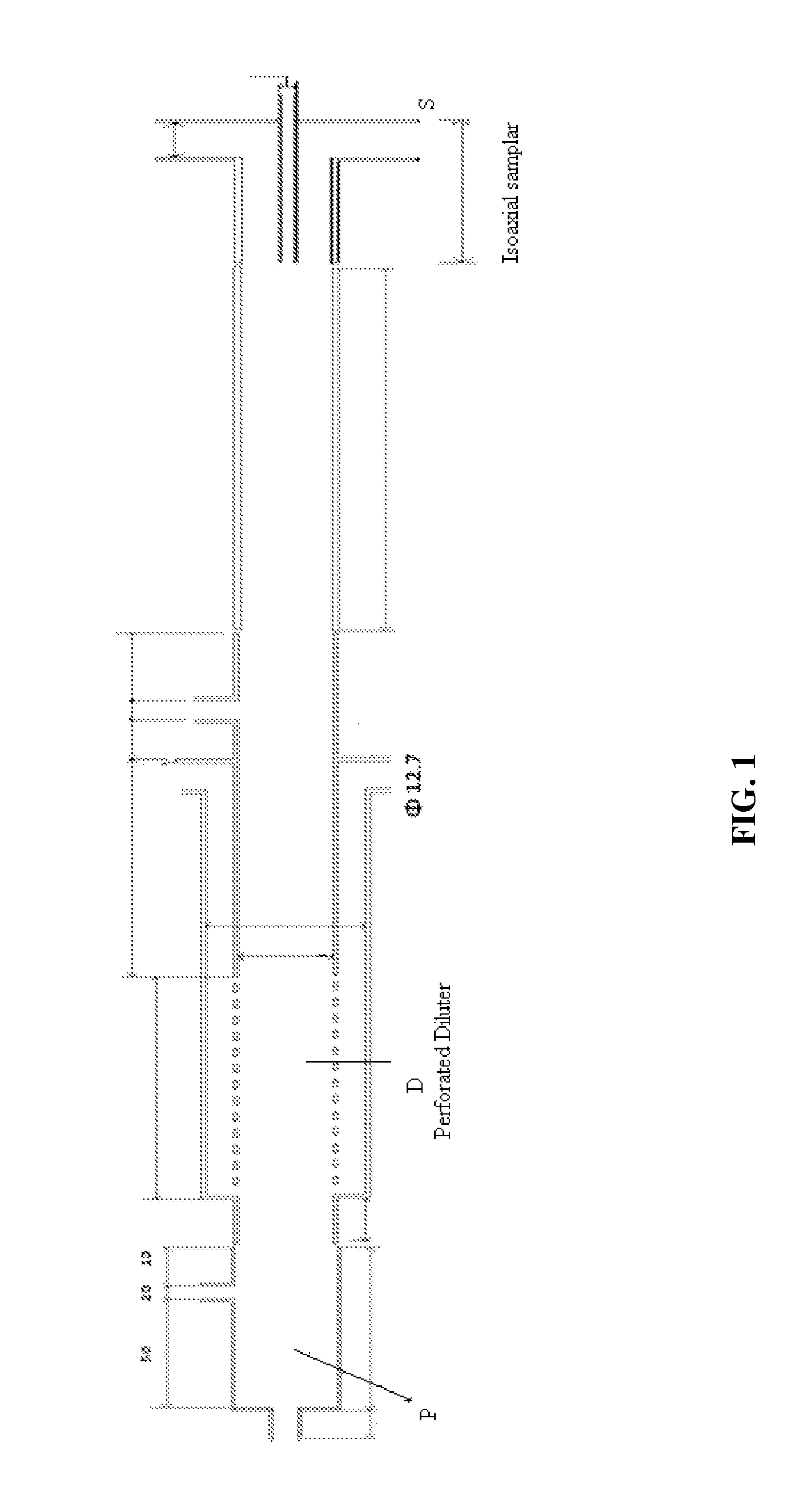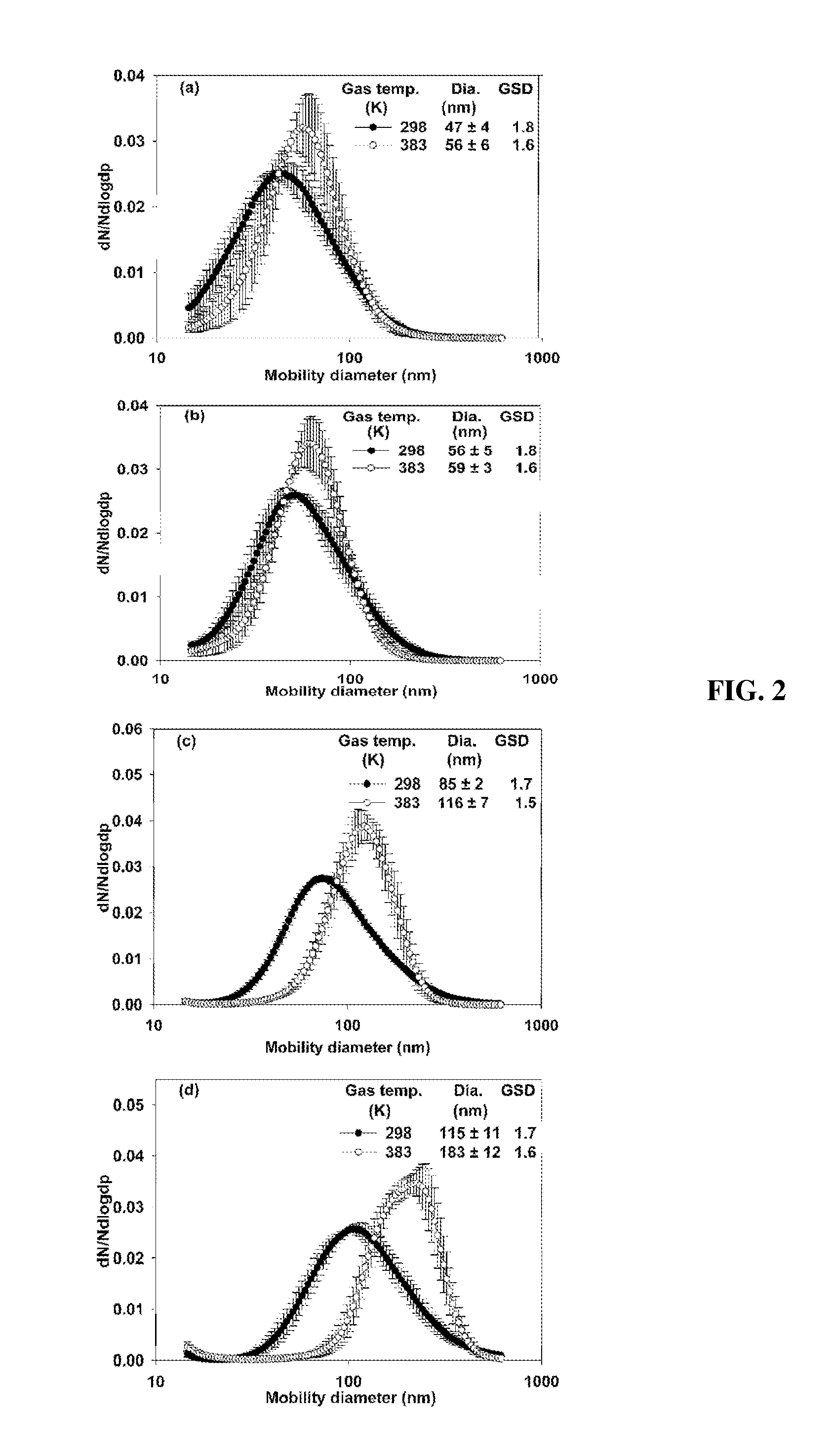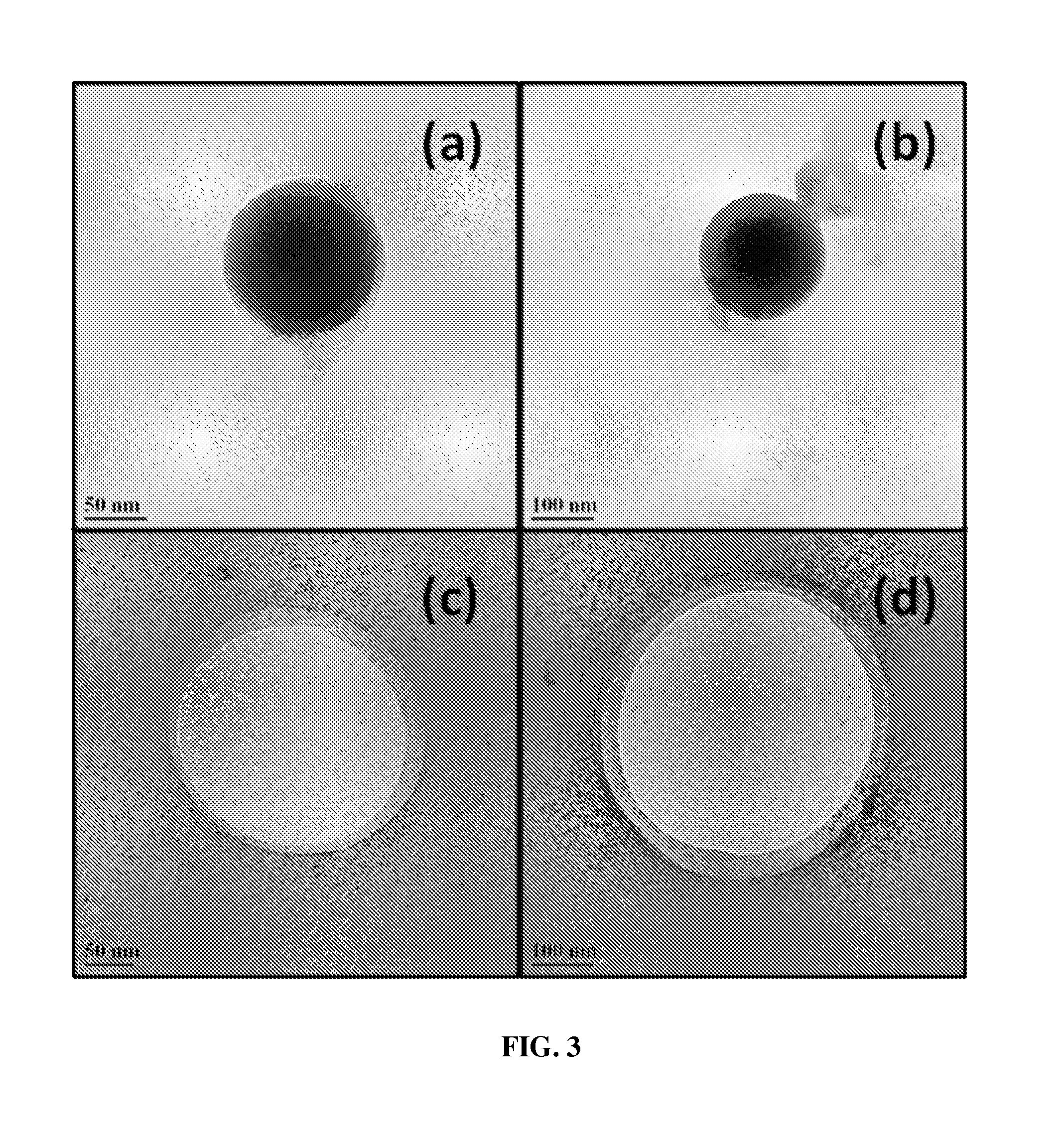Method and a system for producing thermolabile nanoparticles with controlled properties and nanoparticles matrices made thereby
a thermolabile nanoparticle and controlled property technology, applied in the direction of botany apparatus and processes, ceramic shaping apparatus, pharmaceutical non-active ingredients, etc., can solve the problems of high cost, imposition of thermal and shear stress, and limited top-down methods, etc., to achieve sufficient control over size, morphology, crystallinity and controlled release properties
- Summary
- Abstract
- Description
- Claims
- Application Information
AI Technical Summary
Benefits of technology
Problems solved by technology
Method used
Image
Examples
Embodiment Construction
[0012]Nanoparticles matrices of this disclosure are prepared by pulse-heat aerosol reactor method, which involves atomizing a liquid precursor solution containing thermolabile compounds (e.g. encapsulating matrix agents like lipids and / or biodegradable polymers and bioactive agents like drugs, proteins, peptides, nucleic acids, or combination thereof) into a carrier gas, subjecting the aerosol to a heat pulse of controlled magnitude and duration, followed by quenching with cold gas, and collecting the nanoparticles produced. The evaporation rate control thus achieved is used to obtain nanoparticle matrices with varying size, morphology and crystallinity, which have controlled-release properties. The devices consist of atomizer, pump, modular aerosol reactor enabling pulse-heating and means for quenching and temperature sensor.
[0013]This disclosure includes nanoparticle matrices prepared by using this device. It also includes encapsulation of drugs and other bioactives in the nanocap...
PUM
| Property | Measurement | Unit |
|---|---|---|
| Temperature | aaaaa | aaaaa |
| Temperature | aaaaa | aaaaa |
| Fraction | aaaaa | aaaaa |
Abstract
Description
Claims
Application Information
 Login to View More
Login to View More - R&D
- Intellectual Property
- Life Sciences
- Materials
- Tech Scout
- Unparalleled Data Quality
- Higher Quality Content
- 60% Fewer Hallucinations
Browse by: Latest US Patents, China's latest patents, Technical Efficacy Thesaurus, Application Domain, Technology Topic, Popular Technical Reports.
© 2025 PatSnap. All rights reserved.Legal|Privacy policy|Modern Slavery Act Transparency Statement|Sitemap|About US| Contact US: help@patsnap.com



